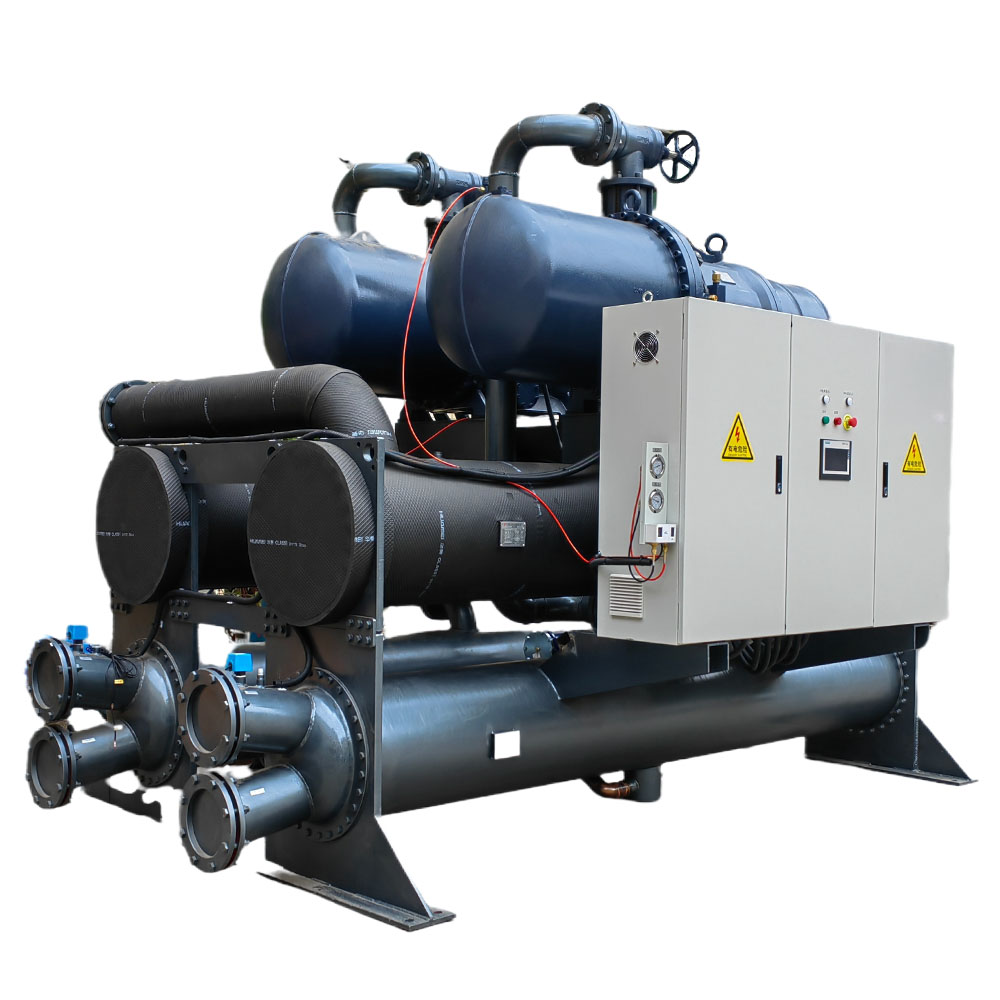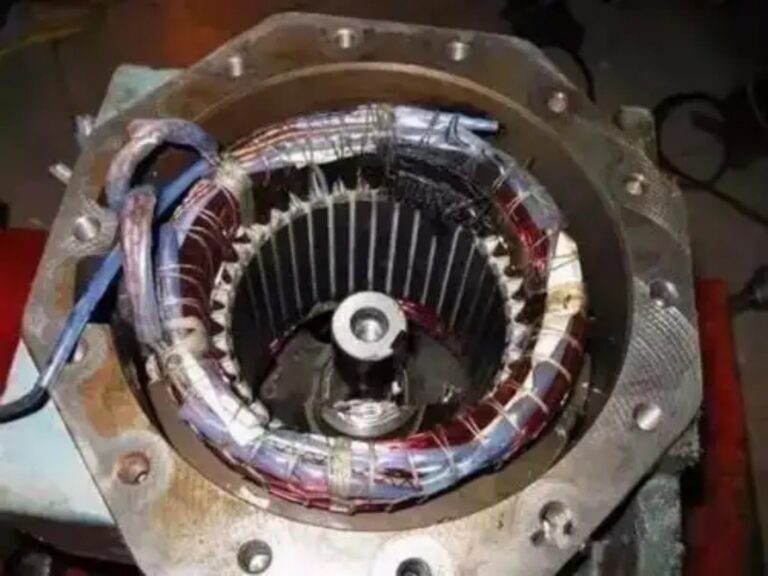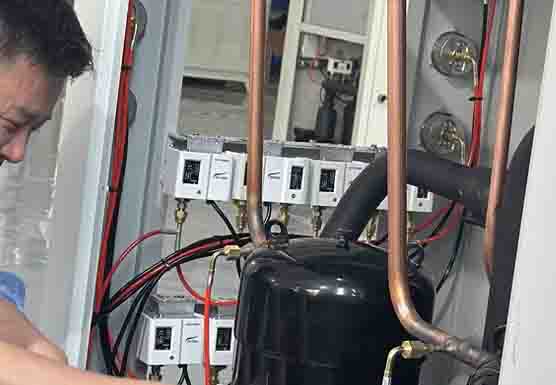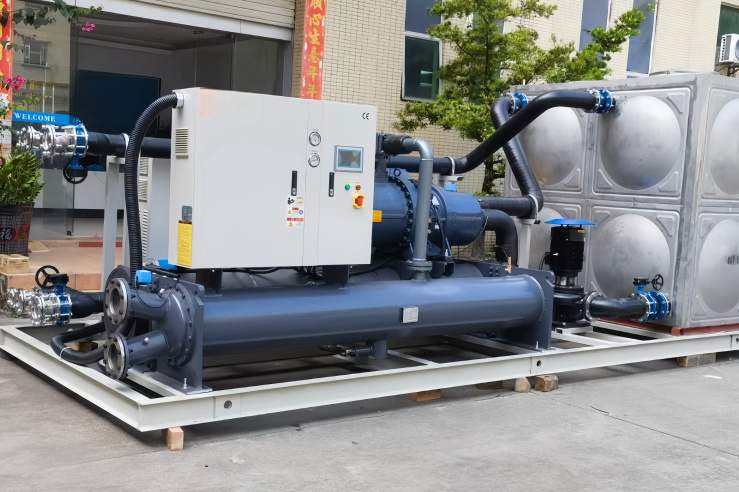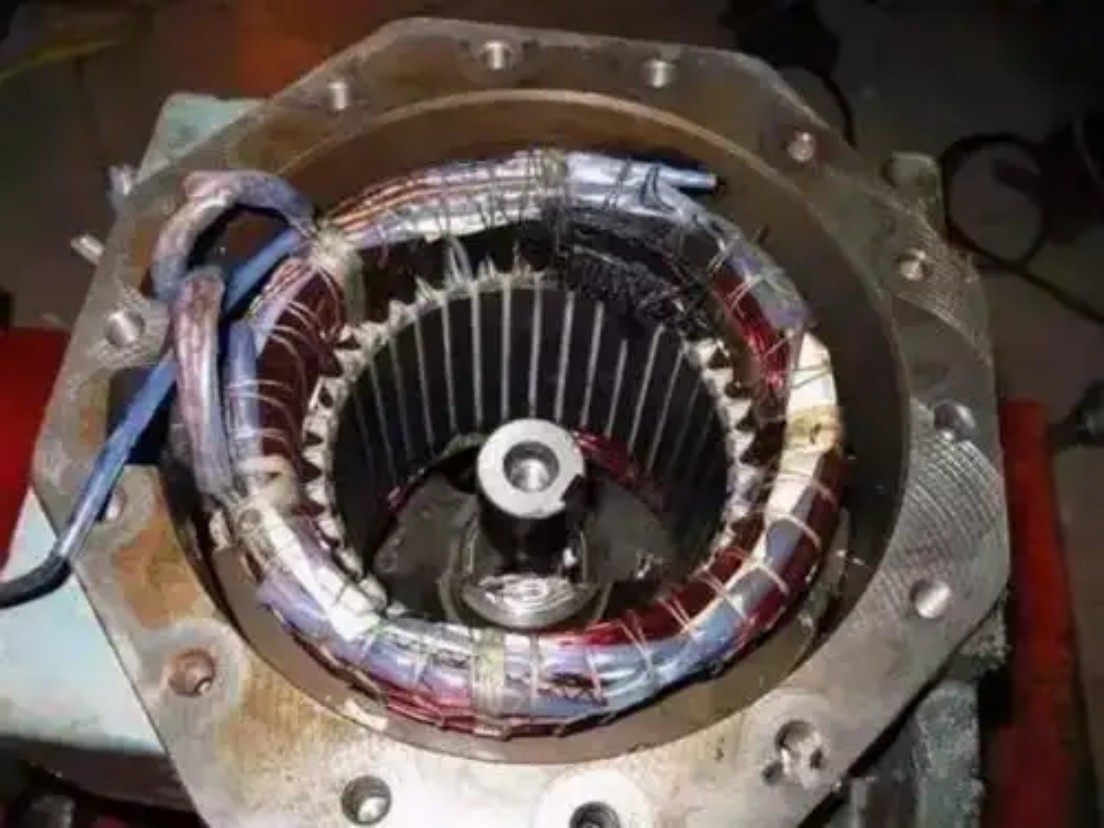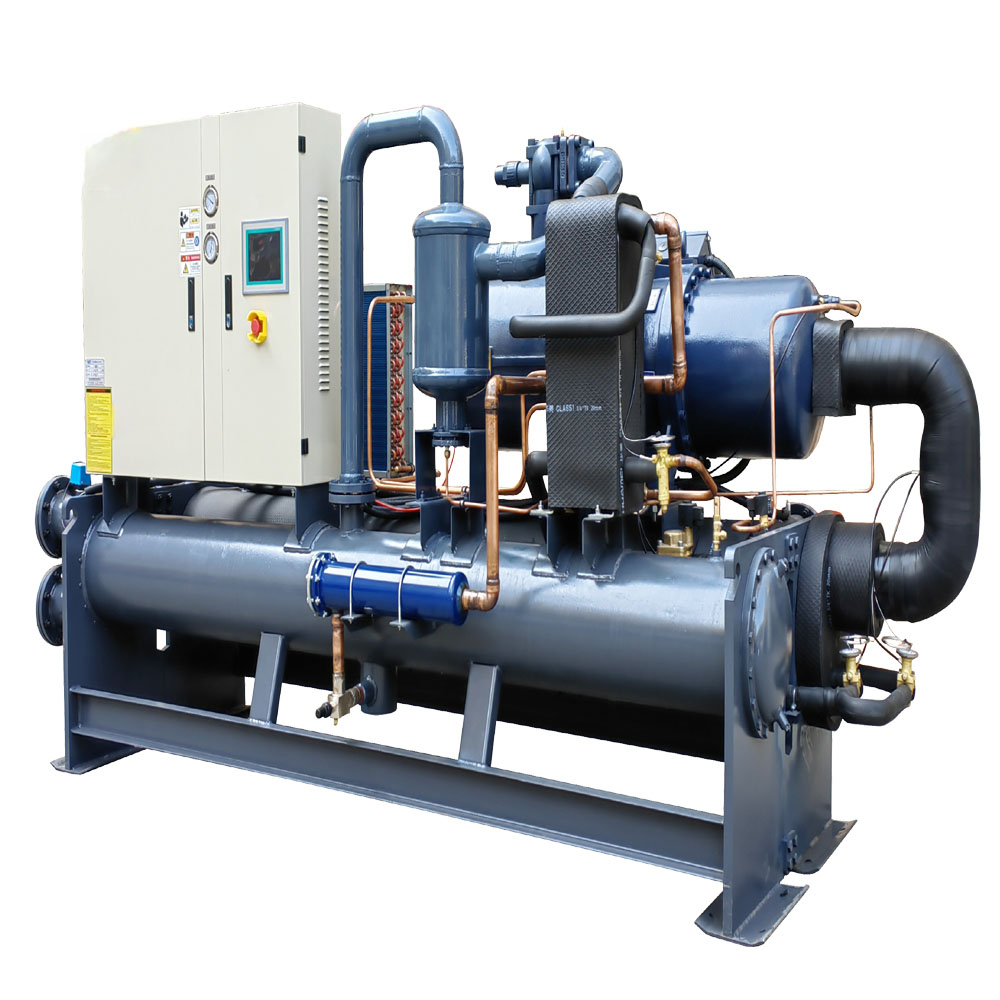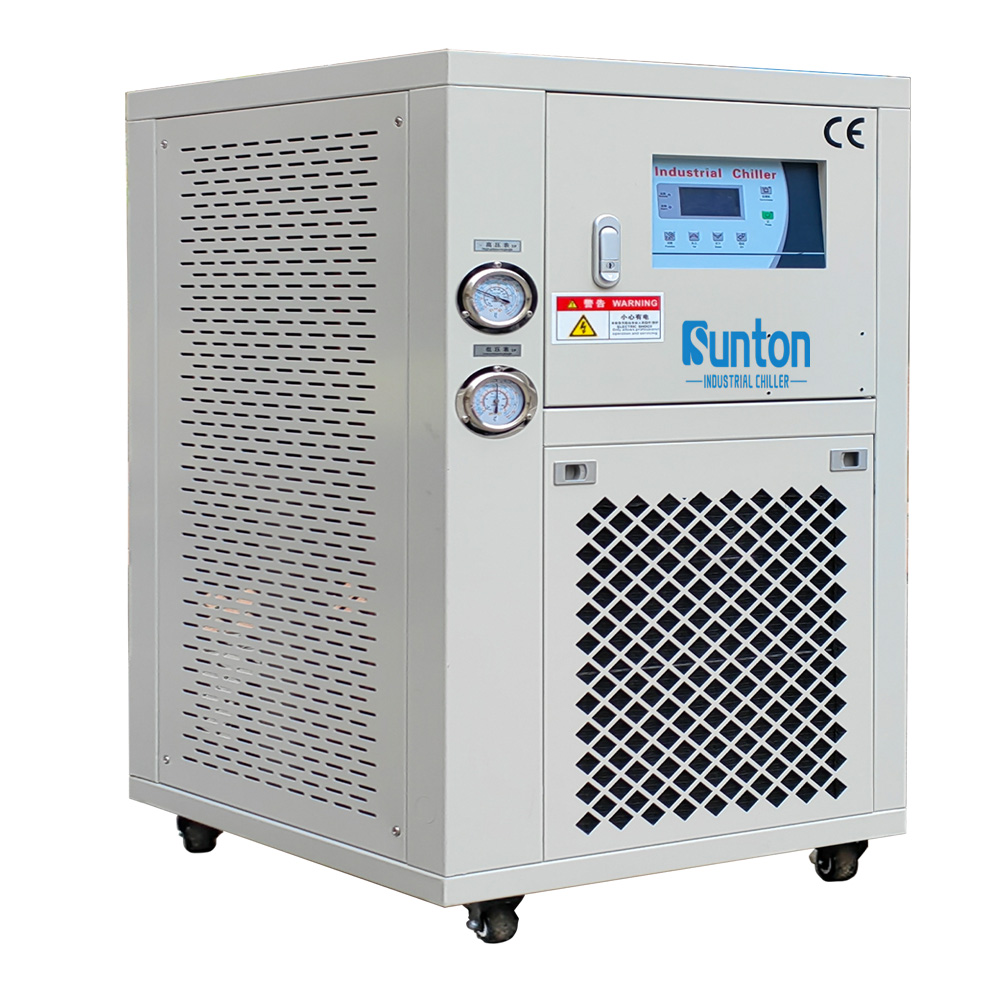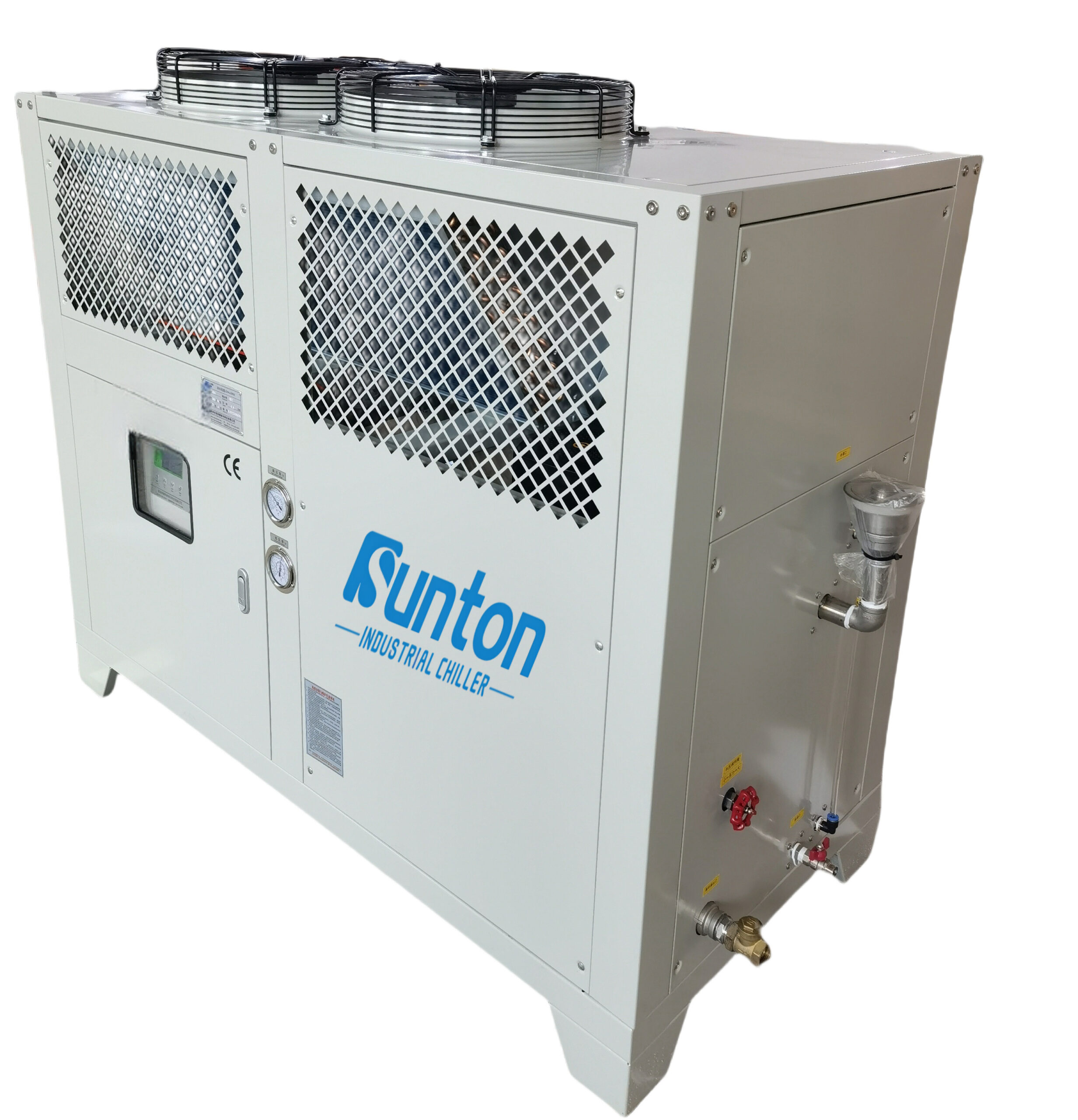-
Даліншань Індастріал Гуандун
Як перевірити промисловий чиллер?
Підвищення промислової ефективності за допомогою холодильних систем: вичерпний посібник
Промислові чиллери є наріжним каменем сучасного виробництва. Зв’яжіться з нами сьогодні, щоб обговорити, як наші чиллери з водяним охолодженням можуть покращити вашу роботу. забезпечення критичного контролю температури в таких галузях промисловості, як Обробка пластику, Біогаз і біопаливо, Управління медичними відходами, Обробка харчових продуктів, Хімічне виробництво, Фармацевтика, Виробництво електроніки, і Охорона здоров'я. Цей посібник досліджує важливість, функціональність і переваги систем охолодження, пропонуючи інформацію, яка допоможе вам оптимізувати та ефективно впровадити ці системи.
Зміст
Що таке холодильна система і як вона працює?
А система охолодження є передовим охолодження Налаштування, розроблене для оптимізації потоку води та теплової ефективності, має вирішальне значення для промислових чиллерів. круто Охолоджена вода або рідини з гліколем, як правило, вода, використовуються для ефективного охолодження промислового обладнання або процесів. За своєю суттю він працює шляхом видалення небажаного тепла з однієї області та перерозподілу його в іншу, часто за допомогою природних або механічних засобів.
Як працюють чиллери
- Основний цикл: Система поглинає тепло від процесу за допомогою a холодоагент, який проходить через такі компоненти, як компресор, конденсатор, випарник, і розширювальний клапан.
- Контроль температури: завдяки ефективному регулюванню температури чиллери забезпечують підтримку оптимальних умов у промислових процесах, зменшуючи ризик перегріву та ефективно відводячи відпрацьоване тепло.
Розуміння цих операцій має фундаментальне значення для використання повної потужності вашої холодильної системи в будь-якому застосуванні.
Чому надійний холодильний агрегат важливий для промислового застосування?
Чиллери мають вирішальне значення в промисловості для підтримки критичних операцій, які залежать від постійного керування температурою.
Промислове застосування
- Пластмаси та виробництво: передбачає охолодження форм і швидке видалення надлишку тепла з пластикових матеріалів.
- Хімічна обробка: Вимагає точного охолодження для контролю реакції та стабільності матеріалу.
- Охорона здоров'я: підтримує середовища, де контрольовані температури необхідні для технологій і догляду за пацієнтами.
Ці застосування підкреслюють необхідність ефективного теплового регулювання, необхідного як для успішної роботи, так і для економії енергії при використанні чиллера з водяним охолодженням.
Які ключові компоненти охолоджувача?
Розуміння первинного компоненти чиллера має вирішальне значення для підтримки його ефективності та ефективності.
Огляд компонентів
- Компресор: Діє як ядро, створюючи тиск для циркуляції холодоагенту в системі, забезпечуючи безперервний цикл.
- Конденсатор: Відводить тепло від холодоагенту, перетворюючи газ у рідину.
- Випарник: служить місцем, де тепло від промислового процесу поглинається холодоагентом, що призводить до охолодження.
- Розширювальний клапан: Зменшує тиск холодоагенту, дозволяючи йому знову ефективно поглинати тепло у випарнику.
Ці елементи складають основу чилера Принцип роботи чиллера передбачає циркуляцію охолодженої води по трубах для охолодження обладнання. Системи теплового керування та рішення для охолодження води є невід’ємною частиною ефективних промислових процесів. контроль температури.
Розуміння циклів охолодження та їх ролі
У "The холодильний цикл лежить в основі ефективної роботи чиллерів відведення тепла зберегти середовище круто.
Цикл охолодження
- Компресія є критичним процесом у циклі охолоджувача, який впливає на швидкість потоку охолодженої води.: холодоагент стискається, підвищуючи тиск і температуру, коли він надходить у конденсатор.
- У системі холодильної машини утворюється конденсат, оскільки охолоджена вода поглинає тепло з навколишнього середовища.: Тепло виділяється, охолоджуючи холодоагент і перетворюючи його назад у рідину.
- Розширення: Рідина проходить через розширювальний клапан, знижуючи тиск, і надходить у випарник.
- Випаровування: Тут він поглинає тепло, перетворюючись на газ і знову охолоджуючи навколишнє середовище.
Ці цикли не тільки підтримуються продуктивність чиллера а також оптимізувати споживання енергії різними програмами.
Як усунути та запобігти витоку холодоагенту?
Витоки холодоагенту може знизити ефективність чиллера та значно збільшити експлуатаційні витрати. Виявлення та попередження цих витоків є критично важливим.
Стратегії управління витоками
- Регулярні перевірки: Проводити регулярні перевірки на наявність витоків у місцях з’єднань і використання ущільнень манометр тести.
- Моніторинг заряду холодоагенту: Переконайтеся, що рівень холодоагенту підтримується стабільно інструкції виробника.
- Використання азоту: Включіть випробування тиском азоту, щоб безпечно перевірити наявність витоків без потрапляння забруднень.
Застосовуючи ці методи, підприємства можуть подовжити термін служби холодильної машини та підтримувати надійну роботу.
Типи чилерів: з повітряним і водяним охолодженням
Вирішуючи між з повітряним охолодженням і чиллери з водяним охолодженням життєво важливий, кожен пропонує різні переваги, що підходять для різних умов.
Порівняльні дослідження
- Чиллери з повітряним охолодженням: Використовуйте потік повітря для розсіювання тепла, що робить їх придатними для місцевостей з обмеженими водними ресурсами.
- Чиллери з водяним охолодженням: Використовуйте a градирня для розсіювання тепла, ідеально підходить для великих і високоефективних середовищ.
Вибір залежить від конкретних потреб, як-от вимог щодо простору, вартості та потужності охолодження, властивих вашій діяльності.
Важливість енергоефективності в продуктивності чиллера
Енергоефективність Розуміння швидкості потоку є ключовим для зниження витрат і підвищення теплової ефективності. продуктивність чиллера у промисловому застосуванні.
Підвищення ефективності
- Приводи зі змінною швидкістю: регулює швидкість компресора для кращого керування енергією.
- Автоматизоване управління: Інтегрує інтелектуальні системи для оптимізації температур на основі поточних вимог навантаження.
- Регулярне технічне обслуговування: Забезпечує максимальну ефективність роботи компонентів шляхом заміни зношених частин і проведення ретельних перевірок.
Такі заходи не тільки оптимізують продуктивність, але й сприяють екологічній стійкості.
Фактори, які слід враховувати під час встановлення чилера
Коли встановлення Для забезпечення максимальної надійності та функціональності чиллера необхідно враховувати багато факторів.
Рекомендації щодо встановлення
- Місткість і розміщення: визначте відповідний розмір для ваших потреб, переконавшись, що він відповідає вашим вимогам до охолодження, враховуючи обмеження на місці.
- Інтеграція з існуючими системами: Переконайтеся в сумісності з поточним холодильні системи і налаштування керування.
- Тестування та введення в експлуатацію чиллера: Ретельна перевірка для підтвердження робочих стандартів і усунення будь-яких початкових дефектів забезпечує ефективне введення системи в експлуатацію.
Вирішення цих аспектів сприяє більш плавному процесу встановлення та довшому терміну служби системи.
Поширені запитання про промислові чиллери
Які сектори отримують найбільшу користь від холодильних систем?
Такі галузі, як переробка пластику, фармацевтика, харчова промисловість та охорона здоров’я, отримують значні переваги від ефективних систем контролю температури. Дізнайтеся, як різні чиллери підходять для конкретних застосувань на нашому сайті Рішення для охолодження низькотемпературних чиллерів.
Яка основна роль чиллера в промислових умовах?
Чиллери круто обладнання та процеси, контроль температури для забезпечення безпеки, ефективності та якості продукції.
Як енергоефективні чиллери впливають на навколишнє середовище?
Зменшуючи енергоспоживання, ці чиллери знижують викиди та експлуатаційні витрати, сприяючи екологічним практикам.
Чому для чиллерів важливе регулярне обслуговування?
Регулярне технічне обслуговування запобігає потенційним збоям системи та витоку холодоагенту, забезпечуючи постійну ефективність і надійність.
Висновок: оптимізація ваших операцій за допомогою холодильних систем
Для галузей промисловості, які покладаються на точне управління температурою, впровадження ефективне холодильні установки є життєво важливим. Від зниження експлуатаційних витрат до підтримки якості продукції, ці системи пропонують безліч переваг. Розуміючи їх ролі, компоненти та типи, ви можете налаштувати рішення, яке точно відповідає вашим потребам. Щоб отримати більш персоналізовану консультацію, Щоб отримати додаткову інформацію про нашу продукцію, включаючи системи охолодженої води, зв’яжіться з нами сьогодні..
Основні висновки
- Ретельно оцініть потреби: Оцінка вимог до охолодження допомагає підібрати ідеальне рішення для охолодження.
- Надайте пріоритет енергоефективності: Впровадити заходи для оптимізації використання енергії та зниження витрат.
- Використовуйте професійний досвідПрацюйте з досвідченими постачальниками, щоб забезпечити ефективну системну інтеграцію, включаючи належне налаштування труб охолодженої води.
Щоб отримати додаткову інформацію, відвідайте наш Гвинтовий охолоджувач води з водяним охолодженням і Противибухові чиллери розроблені для безпечного керування потоком охолодженої води у небезпечних середовищах. пропозиції.
